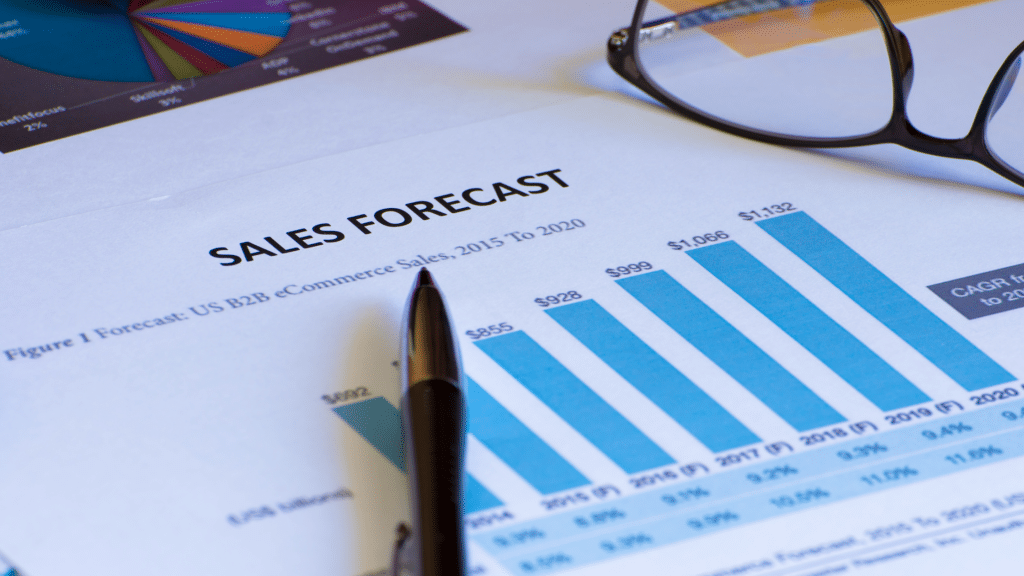Keeping pace, and staying ahead of, market trends, is a business imperative. The ability to accurately predict market trends can give companies a competitive edge, enabling them to make well-informed decisions and seize new opportunities. This is where Artificial Intelligence (AI) comes into play. With its advanced capabilities and predictive algorithms, AI has revolutionized market trend forecasting, paving the way for smarter and more strategic decision-making.
Understanding Artificial Intelligence
AI refers to the ability of machines to perform tasks that typically require human intelligence. This includes processes such as learning, reasoning, and problem-solving. Processing large amounts of data and powerful computing capabilities, AI algorithms can identify patterns, make predictions, and automate decision-making processes.
One of the fundamental concepts in AI is machine learning. Machine learning is a subset of AI that focuses on enabling computers to learn and improve from experience without being explicitly programmed. This means that machines can analyze data, identify patterns, and make predictions based on their previous experiences. It is a powerful tool that has revolutionized many industries, including market trend forecasting.
Another branch of AI that is worth mentioning is deep learning. Deep learning uses neural networks to analyze vast amounts of data and extract meaningful insights. It is inspired by the structure and function of the human brain, with multiple layers of interconnected nodes that process and interpret information. Deep learning has been particularly successful in tasks such as image recognition, natural language processing, and speech recognition.
These technologies serve as the foundation for AI-driven market analysis, providing businesses with invaluable foresight.
AI in Today’s World
AI is no longer confined to the realm of science fiction. It has become an integral part of our daily lives, from voice assistants in our smartphones to recommender systems on popular e-commerce platforms. Its presence spans across various industries, including healthcare, finance, and entertainment. Artificial Intelligence has revolutionized trend forecasting in various industries.
Fashion Trend Forecasting
For example, fashion trend forecasting has become more accurate with AI-powered tools. These tools analyze vast amounts of data to predict upcoming trends. Trend prediction algorithms consider factors like consumer behavior and social media trends. A trend forecaster can now rely on AI to enhance their insights. Fashion forecasting has evolved significantly with the integration of AI technologies. Trend predictions are now based on complex forecasting models and data analysis. Trend reports generated by AI offer comprehensive insights into future trends. Fashion trend forecasters use these reports to guide their decision-making processes. Upcoming trends are identified earlier, giving fashion companies a competitive edge. Many businesses now rely on forecasting agencies to stay ahead of market trends. Trend research has become more sophisticated, incorporating AI-driven pattern recognition. Fashion trends are no longer solely determined by fashion weeks or industry insiders. Consumer trends play a crucial role in shaping the fashion industry’s direction. Key trends are often influenced by macro trends in society and culture. New trends emerge rapidly in today’s fast-paced fashion world. Understanding the future consumer is vital for fashion brands to succeed. Fashion companies must adapt quickly to changing consumer insights and preferences. Fast fashion retailers particularly benefit from AI-powered trend forecasting tools. These tools help them respond swiftly to emerging fashion trends. The fashion industry relies heavily on accurate trend forecasts for success. Fashion brands use AI to analyze data from various sources. This includes social media, fashion weeks, and consumer behavior patterns. The fashion world is constantly evolving, driven by changing consumer preferences. AI helps identify these changes and predict their influence on markets.
Consumer Behavior Analysis
Consumer behavior analysis is a key component of AI-driven trend forecasting. Social media platforms provide valuable data on consumer preferences and interests. Cultural shifts and pop culture significantly influence fashion and market trends. AI tools can identify exploding topics and trends across various platforms. Color palettes for upcoming seasons are often predicted using AI algorithms.
Market Trend Analysis
Market trend analysis is crucial for businesses across all sectors. AI-powered tools provide insights into both micro and macro trends. These insights help companies make informed decisions about product development. Consumer insights derived from AI analysis guide marketing and sales strategies.
Healthcare And AI
In healthcare, AI is being used to improve diagnosis and treatment planning. AI algorithms can analyze medical images, such as X-rays and MRIs, and detect abnormalities with high accuracy. This not only speeds up the diagnosis process but also improves patient outcomes.
Finance And AI
In finance, AI is being used to detect fraudulent transactions and predict market trends. By analyzing large amounts of financial data, AI algorithms can identify patterns and anomalies that humans may miss. This helps financial institutions to mitigate risks and make informed investment decisions.
Entertainment and AI
In the entertainment industry, AI is being used to personalize user experiences. Streaming platforms, such as Netflix and Spotify, use AI algorithms to recommend movies, TV shows, and music based on users’ preferences. This enhances the user experience and keeps customers engaged.
In market trend forecasting, AI holds immense potential, empowering companies to make data-driven decisions and steer their organizations towards success. By analyzing historical data, market trends, and consumer behavior, AI algorithms can provide valuable insights and predictions. This allows businesses to anticipate market changes, identify emerging trends, and adapt their strategies accordingly.
AI and Market Trend Forecasting
AI plays a key role in market analysis by analyzing vast amounts of data to identify patterns and trends. Traditional methods of market analysis often fall short due to their limited scope and human biases. On the other hand, AI can effortlessly sift through large volumes of data, including historical data, social media feeds, and news articles, to unearth valuable insights. This enables businesses to gain a holistic understanding of market trends and make informed predictions.
Predictive Capabilities of AI
One of the most powerful aspects of AI in market trend forecasting is its ability to make accurate predictions. Analyzing historical data and identifying correlations between various factors, AI algorithms can generate forecasts with high precision. This empowers businesses to anticipate market trends, adapt their strategies, and capitalize on emerging opportunities. The predictive capabilities of AI not only save time and resources but also enhance decision-making processes, giving businesses a competitive advantage.
Benefits of Using AI for Forecasting
The benefits of incorporating AI into market trend forecasting are manifold. Let’s explore two key advantages: accuracy and efficiency.
- Accuracy and Efficiency in Predictions: AI-driven market trend forecasting offers unparalleled accuracy. By leveraging advanced algorithms and machine learning techniques, AI can analyze vast amounts of data with speed and precision. This ensures that predictions are based on comprehensive and up-to-date information, reducing the margin of error. Additionally, AI automates the data analysis process, freeing up valuable time for teams to focus on strategy development and implementation.
- Real-Time Market Trend Analysis: Another notable advantage of AI is its ability to provide real-time market trend analysis. Traditional methods of market analysis often suffer from delays, making it challenging for businesses to respond swiftly to changing market conditions. AI, on the other hand, can process data in real-time, providing businesses with real-time insights into market trends. This enables companies to make agile and data-driven decisions, leading to increased responsiveness and better business outcomes.
Challenges in AI-Based Market Forecasting
While AI holds great promise in market trend forecasting, there are certain challenges that need to be addressed. Let’s explore two key challenges: data privacy and security concerns and overcoming limitations in AI-based forecasting.
Data Privacy and Security Concerns
As AI relies heavily on data, ensuring data privacy and security is paramount. Companies need to establish robust measures to protect sensitive data and comply with privacy regulations. Transparency in data collection and usage is essential to build trust with customers and stakeholders. By prioritizing data privacy and security, businesses can fully harness the power of AI while mitigating potential risks.
Overcoming Limitations of AI in Forecasting
While AI excels in many aspects of market trend forecasting, it is not without its limitations. AI operates based on historical data, which means it may struggle to predict unprecedented events or significant disruptions in the market. Furthermore, AI algorithms can be influenced by biases present in the data, which may affect the accuracy of predictions. Overcoming these limitations requires a combination of human expertise and continuous improvement of AI models.
The Future of AI in Market Trend Forecasting
The future of AI in market trend forecasting holds immense potential. The field of AI is constantly evolving, giving rise to new technologies that further enhance market trend forecasting. Natural Language Processing (NLP) enables AI systems to understand and analyze human language, opening up possibilities for sentiment analysis and social media monitoring. Additionally, advancements in computer vision allow AI to interpret images and videos, providing additional sources of data for market analysis. These emerging technologies have the potential to revolutionize how businesses forecast market trends. From retail and e-commerce to finance and healthcare, businesses in every sector can benefit from AI-driven insights. For example, retailers can optimize inventory management by accurately predicting consumer demand, while financial institutions can make data-driven investment decisions. As AI continues to evolve, its application in market trend forecasting will reshape industries and drive innovation.
The power of AI in market trend forecasting cannot be overstated. With its advanced algorithms and predictive capabilities, AI empowers businesses to make well-informed decisions, anticipate market trends, and stay ahead of the competition. As businesses adopt AI technologies like Graphite Note, a no-code predictive and prescriptive analytics tool, the future of market trend forecasting looks promising.




